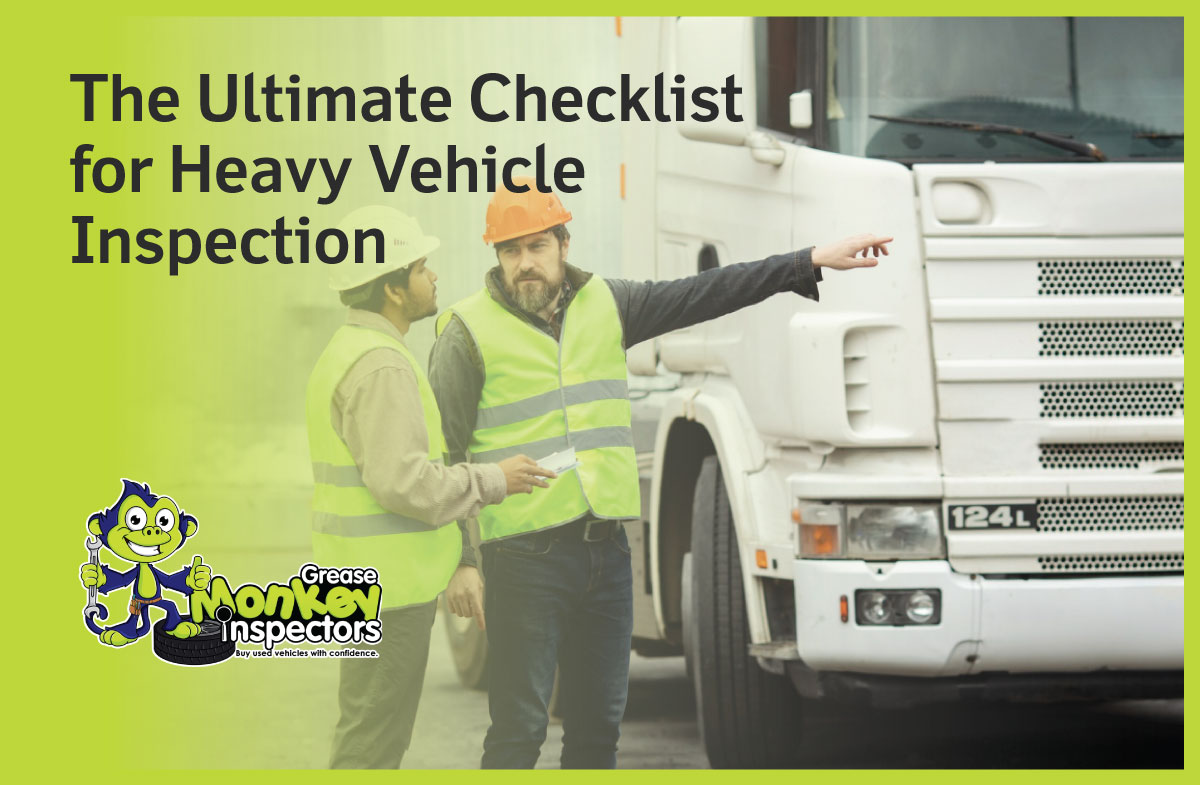Are you a heavy vehicle owner or operator in Australia? Ensuring the safety and compliance of your vehicles is crucial for both road safety and regulatory compliance. In this comprehensive guide, we’ll walk you through the ultimate checklist for heavy vehicle inspection, covering everything from finding inspection stations to completing the inspection process. Whether you’re a truck driver, fleet manager, or logistics company, this checklist will help you stay on top of your heavy vehicle maintenance and compliance requirements.
Finding Heavy Vehicle Inspection Stations in Australia
Before diving into the inspection checklist, it’s essential to know where to get your heavy vehicles inspected. In Australia, there are numerous inspection stations spread across the country. These stations are equipped with certified inspectors and state-of-the-art equipment to ensure thorough inspections. You can easily find heavy vehicle inspection stations in Australia by searching online or using specialized apps. One reputable option is Greasemonkey Inspectors, known for their professionalism and reliability. You can locate their inspection station here.
Booking a Heavy Vehicle Inspection
Once you’ve identified a nearby inspection station, the next step is to book an appointment for your heavy vehicle inspection. Booking a heavy vehicle inspection is simple and can often be done online or over the phone. Many inspection stations, including Greasemonkey Inspectors, offer convenient online booking systems, allowing you to schedule inspections at your preferred date and time. By booking in advance, you can avoid long wait times and ensure that your vehicles undergo timely inspections.
The Heavy Vehicle Inspection Checklist
Now, let’s delve into the core of our guide: the heavy vehicle inspection checklist. This checklist is designed to cover all critical components of your heavy vehicle, ensuring that it meets safety standards and regulatory requirements. Whether you’re inspecting a truck, bus, or any other heavy vehicle, following this checklist diligently will help identify potential issues and prevent costly breakdowns or accidents down the road.
- Exterior Inspection
– Check for any signs of damage, such as dents, scratches, or rust.
– Inspect lights, including headlights, taillights, brake lights, and turn signals.
– Ensure that mirrors are properly adjusted and intact.
– Check the condition of tires, including tread depth and inflation pressure.
- Interior Inspection
– Test all seatbelts for functionality.
– Check the condition of seats and upholstery.
– Inspect dashboard gauges and warning lights.
– Test the functionality of the horn and windshield wipers.
- Under the Hood Inspection
– Check fluid levels, including oil, coolant, brake fluid, and power steering fluid.
– Inspect hoses and belts for signs of wear or damage.
– Test the battery and ensure secure connections.
– Check for any fluid leaks underneath the vehicle.
- Brake Inspection
– Test the functionality of parking brakes and emergency brakes.
– Inspect brake pads, rotors, and drums for wear.
– Check brake fluid levels and ensure proper functioning of the brake system.
- Suspension and Steering Inspection
– Inspect suspension components for wear or damage.
– Test steering responsiveness and check for any unusual noises.
– Ensure that steering linkage and tie rods are secure.
- Exhaust System Inspection
– Check for any signs of exhaust leaks or damage.
– Inspect the condition of mufflers and catalytic converters.
– Ensure that exhaust emissions meet regulatory standards.
- Safety Equipment Inspection
– Test the functionality of fire extinguishers and emergency triangles.
– Check the condition of first aid kits and safety vests.
– Ensure that reflective tape and signage are intact and visible.
- Documentation Inspection
– Verify that the vehicle registration and insurance are up to date.
– Check for the presence of a heavy vehicle certificate of inspection.
– Review maintenance records for any recent repairs or servicing.
By following this comprehensive checklist, you can ensure that your heavy vehicle is in optimal condition and compliant with regulations. Remember, regular inspections are not only a legal requirement but also essential for the safety of drivers and other road users.
Inspections Packages
Ready to schedule your heavy vehicle inspection? Greasemonkey Inspectors offer a range of inspection packages tailored to your specific needs. From basic safety checks to comprehensive assessments, their experienced inspectors will ensure that your vehicles are roadworthy and compliant. Book your inspection package here and drive with confidence.
Greasemonkey Inspector | Melbourne Car Inspection
📞 0481 608 866
📧 support@greasemonkeyinspectors.com
📍 13/324 Settlement Road Thomastown VIC 3074

